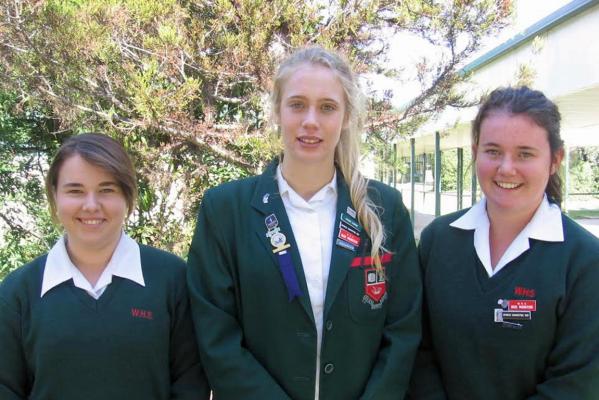Los directores que luchan para llenar los cargos docentes han recurrido a la compra de casas para ofrecerlas al personal como un último intento desesperado para compensar el impacto de la crisis de la vivienda.
Una «tormenta perfecta» ha creado una escasez de enseñanza de la escuela secundaria, exacerbado por los profesores que huyen de la subida de precios de la vivienda en Auckland, dice el director.
Una nueva encuesta de directores encontró que uno de cada 10 escuelas informaron que eran incapaces de cubrir puestos permanentes después de la publicidad. El maestro Western Springs College y miembro de PPTA Melanie Webber dice que la crisis de la vivienda está teniendo un enorme impacto en la escuela .
El promedio de los maestros de la escuela secundaria gana entre $ 46,000 y $ 75,000, pero el precio de casa mediano Auckland es 812.000 $ – cuatro veces el valor de una casa Southland.
El creciente problema ha llevado a los sindicatos de educación y el Ministerio de Educación de unir fuerzas para encontrar soluciones, pero al menos un director está tomando medidas en sus propias manos para combatir la escasez de maestros.
Macleans College de Auckland es la compra de casas en el barrio acomodado de Bucklands Beach, donde el hogar típico se vende por $ 1 millón.
El director de la universidad Byron Bentley dijo que esa «tormenta perfecta» de condiciones, había conducido a una escasez de profesores de enseñanza secundaria.
En un intento por atraer a las aplicaciones, la escuela estaba ofreciendo ayuda para conseguir vivienda y/o alojamientos a los maestros en la escuela.
«Estamos explorando la compra de alquileres para proporcionar un alojamiento asequible para el personal actual y futuro.»anuncio Regeneración
La escuela espera comprar «un par» de viviendas en alquiler a los maestros por debajo de las tasas del mercado en 2017, dijo, sin embargo no se sabía cómo la escuela iba a financiar el plan.
«Estamos sin duda mirarlo y sé un montón de otras escuelas son demasiado porque tenemos que hacerlo.»
Hubo informes de una escuela North Shore considerando un enfoque similar para atraer al personal docente.
Macleans Colegio ya ha anunciado los cargos disponibles para el 2017 – una práctica normalmente se deja hasta el final del año.
Bentley dijo que ocho maestros abandonaron la escuela en los últimos años debido a que tuvieron que desplazarse fuera de Auckland, en vsta al aumento de los precios inmobiliarios.
Para agravar el problema también los está afectando la falta de profesores licenciados en matemáticas y ciencias y la jubilación de los baby boomers que se avecina.
El aumento de la matrícula escolar y un gran número de estudiantes internacionales también aumentó la demanda de los maestros a través de Auckland, dijo.
Actualmente no hay incentivos adicionales para los maestros que trabajan en plazas dificiles de cubrir, o para los que trabajan en la ciudad más poblada del país.
Eso significa que los graduados pueden esperar el mismo salario independientemente de que trabajen en Invercargill o Auckland, a pesar de la enorme brecha en los gastos de alojamiento.
El presidente de la Asociación de directores de eduación secundaria Pasley dijo que la escasez de maestros estaba en el «punto crítico» en Nueva Zelanda.
Los directores les resulta casi imposible encontrar maestros de calidad de la ciencia, las matemáticas, la tecnología y Te Reo Maori, dijo.
Muchas escuelas ya estaban anunciando para 2017.
Había 76 posiciones Auckland anunciados en el Boletín Educación esta semana, sobre todo para los profesores de ciencias y matemáticas en las escuelas secundarias de deciles.
El sindicato de profesorado de secundaria y la Asociación Primaria Mensaje del Maestro (PPTA) están trabajando con el Ministerio de Educación en un informe sobre la escasez de maestros.
La PPTA ha publicado su propio informe anual en cuestiones de personal basado en una encuesta a los directores, en el cual los maestros que se retiran y los costos de la vivienda en Auckland fueron citados como dos preocupaciones principales para los directores, en vista que muy pocos profesores eran dueños de una casa en el suburbio de Auckland. «Los maestros no pueden realmente permitirse el lujo de vivir en el barrio que enseñan en».
Los profesores licenciados en Auckland a menudo asumen deudas financieras después de graduarse, mientras que los maestros en las ciudades más asequibles guardan el dinero, dijo Webber.
Por su parte, el ministro de Educación Hekia Parata dijo que el Ministerio no tenía constancia de ser abordado sobre la adquisición de vivienda por MacLeans Colegio.
«Lo que puedo decir es que antes de invertir en activos, se requiere que las juntas escolares demuestren al Ministerio de Educación que no sólo tienen los fondos para la compra de los activos, sino los fondos suficientes para cubrir los costes en curso» , cuidando que la financiación que se les ha provisto a las escuelas, sean utilizadas para la finalidad para la que fue concedida por el Gobierno, dijo.
El Ministerio de Educación instó a los directores que tienen problemas con el reclutamiento de profesores a hablar con ellos.
«Ellos deben ponerse en contacto con nosotros, porque podemos y vamos a ayudar y hemos asistido», dijo la portavoz Lisa Rodgers.
Fuente: http://www.stuff.co.nz/national/education/80493595/schools-luring-teachers-to-auckland-with-help-of-accommodation.html













 Users Today : 23
Users Today : 23 Total Users : 35460154
Total Users : 35460154 Views Today : 37
Views Today : 37 Total views : 3418820
Total views : 3418820